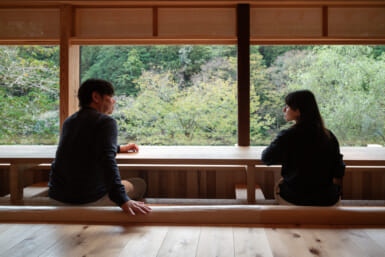This is a strange time of year, as many of you who have lived in Japan for a while will know. It is a season of migration of souls. It is a time to prepare for the worst—death awaits the unwary—and a time of renewal and of hope.
The tremendous increase in the temperature, accompanied by high humidity in the afternoons, can suddenly catch up with someone who is overdoing it, thinking themselves in the best of health. A Japanese friend in his late 50s just called to say how a classmate of his had just passed away. Seemingly at the height of his powers, the friend blew apart in a matter of seconds.
I would like to dedicate these few remarks to two others who just left us and two who departed this earth last year. All four were friends of mine. All four came from the Indian subcontinent. All seemed aware that their time had come, as they approached the very end.
Here I have in mind Swadesh de Roy, Firdous Khergamvala, K.V. Narain and last, but not least, the Pakistani Dr. Khan. All were long-time members of the Foreign Correspondents Club.
I mentioned the migration of souls a moment ago. I can’t say that I believe in the notion of reincarnation, born of the subcontinent. But I wouldn’t disbelieve either, would you? Agnosticism, then, is in order? I don’t think so, not at this time of year. I think one has got to face the fact, as do the Japanese— theirs is a lovely piece of wisdom—that our dead live within us, and perhaps control us, more than we they.
Thus, in August, those who can who live here make a pilgrimage to their ancestral homes and commune with their ancestors. So this is a time of renewal of forces, of concentrating the mind.
All this is my long-winded way of saying: friends, farewell. But it also to say—to a coming generation today—welcome. I have been looking at the big photographs put up lately in our club—the FCCJ—by Caroline Parsons in an exhibition titled “A Portrait of 17s”.
These faces of very young Japanese—including one who is a reporter in the making and two who are budding photographers themselves—dominate the club’s walls in a way that nothing that we have put up in a while did. I feel that our four departed friends would approve.
The FCCJ happens to be an exceedingly difficult place to hang art. One has got to be spot on, given the atmosphere of the place. One slight touch of irrelevance and the works die.
My impression is that Caroline’s photos are very happily installed. They fill the space available. How would you like to be 17 again? But actually you can be, just letting yourself be filled with these images.
Seated in the club of late, I found my eyes straying to the walls. For years, as we all know, our club has been redolent of old age. The average age of our members, those who participate, has risen to the upper 50s or thereabouts. Wow! What have we been doing to ourselves? All of a sudden, the actual age of those looking down at us from the walls is 17.
Optimist as I am too inclined to be, this changes everything.
I foresee a fruitful season ahead. I think that O-Bon—the “Festival of the Dead,” upcoming in August—can be special this year. It can be a time to complete a book project or it can be a time to be quiet.
In the meantime, I note that there is a sort of interlocking this year, which makes this summer different from any other that I can remember here. Somehow, the Subcontinent is here.
I confess I have never been there. But one doesn’t necessarily have to visit a part of the world to feel it. I feel Things Indian all around me of late. Only yesterday, I visited a Japanese businessman—he is president of a company that puts on “events” and specializes in souping up corporate images. He told me that, when he is planning a promotion in the region, he goes to Hong Kong.
“People from India won’t come as far as Tokyo,” he said. “They will come up to Hong Kong—so we have to do things there.”
Japanese entrepreneurs, then, accept that the world calls upon them to spread their wings and fly. They have to make special provisions for those from India, Pakistan and Bangladesh. This is new…
As for the spaceless world that is taking shape around us— the world of software—the Indian subcontinent all but reigns supreme. Ditto in certain types of consultancy. A young man came up to me at a conference the other day and identified himself as an executive at a company employing 9,000 worldwide, with its headquarters in Bombay.
What was he doing in Tokyo? Joining in the expansion of his company’s business. His firm offers skills that the Japanese lack, when it comes to refocusing management around new world trends.
That was a first contact for me with that company…
A new, seamless world where we must all “connect”—using the verb as employed by the English novelist E.M. Forster, meaning that a person is only as good as his or her friends—is suddenly swimming into view, as I see it.
It is a world that would have been largely unfamiliar to K.V. Narain, to Dr. Khan and to Swadesh—but not so unfamiliar to Firdous, the youngest of the four, an enthusiast for tying the FCCJ into a bigger world outside.
Friends, I salute thee all.









